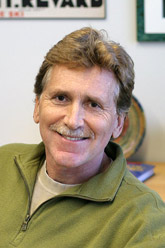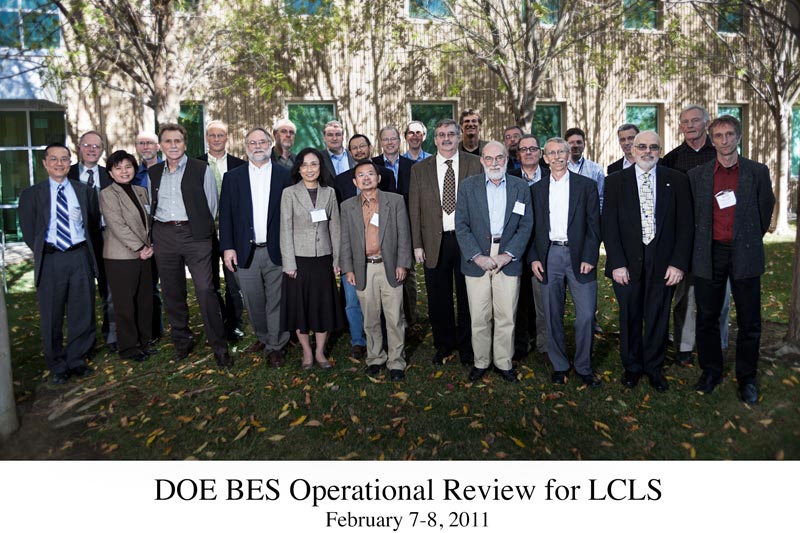
Handy Links
SLAC News Center
SLAC Today
- Subscribe
- Archives: Feb 2006-May 20, 2011
- Archives: May 23, 2011 and later
- Submit Feedback or Story Ideas
- About SLAC Today
SLAC News
Lab News
- Interactions
- Lightsources.org
- ILC NewsLine
- Int'l Science Grid This Week
- Fermilab Today
- Berkeley Lab News
- @brookhaven TODAY
- DOE Pulse
- CERN Courier
- DESY inForm
- US / LHC
SLAC Links
- Emergency
- Safety
- Policy Repository
- Site Entry Form

- Site Maps
- M & O Review
- Computing Status & Calendar
- SLAC Colloquium
- SLACspeak
- SLACspace
- SLAC Logo
- Café Menu
- Flea Market
- Web E-mail
- Marguerite Shuttle
- Discount Commuter Passes
-
Award Reporting Form
- SPIRES
- SciDoc
- Activity Groups
- Library
Stanford
Around the Bay
From the Director: LCLS under the Microscope

We in SLAC management haven't yet seen the written report, but the verbal closeout of the Department of Energy's first review of the Linac Coherent Light Source as a national user facility couldn't have been much better. The reviewers were particularly complimentary about the reliable and flexible linac operation by the accelerator staff and the experimental support of the users on the experimental floor. Their praise singled out the hard-working instrument scientists. Members of the review team mused whether the rapid LCLS evolution and the early LCLS success may be accompanied by burnout of our scientists. I certainly have the same worries and one of our goals this year is to hire additional support for the instrument teams.
The review took place on Monday and Tuesday of this week. The review team was led by Peter Lee from the Scientific User Facilities Division of DOE's Office of Basic Energy Sciences, who assembled 12 scientists from around the country to look at all aspects of LCLS operations. The review covered accelerator and X-ray operations, user support, instrument installation, commissioning and status, as well as budget management and interactions between LCLS and the other directorates of SLAC. The review team also conducted conference calls with members of the LCLS User Executive Committee and the LCLS Scientific Advisory Committee.
In preparation for the review many people contributed to a website (SLAC internal) that was established by John Arthur and Andrea Chan.
This site contains the names of the reviewers and the presentations given at the review. Besides talks by LCLS scientists and engineers, we invited four LCLS users to present experimental results: Anton Barty from the Center for Free Electron Laser science at DESY, Hermann Dürr from PULSE/SIMES of SLAC, Reinhard Kienberger from the Technical University of Munich and Brian Stephenson from Argonne National Laboratory. The review team and the scientists who made presentations at the review are shown in the accompanying picture.
The website also has a link to a summary document that provides an LCLS overview of facilities, operations and management. Detailed backup information made available to the reviewers can also be seen on the website, and one particularly interesting link, item 1.v., which explains how LCLS does business with a clickable functional organization chart. This functional organization chart differs from the more familiar SLAC administrative organization chart accessible from the SLAC home page listing the six directorates and their subunits. For the review we wanted to highlight how LCLS really works and show that it is supported by people from across the laboratory. Clicking on the subunits in the functional org chart shows the names of all people whose main job is to support LCLS. These people mainly come from three SLAC directorates. Besides the entire staff of the LCLS Directorate, who provide the X-ray and laser expertise, support the operation and conduct scientific experiments, a large number of people are from the Accelerator Directorate, supplying the expertise in accelerator operations and R&D as well as accelerator-related engineering and fabrication. Even a group of people from the Particle and Particle Astrophysics Directorate are matrixed to LCLS and we could not operate without their expertise in instrument controls, data acquisition and detectors.
Let me finish by thanking all people who have contributed to the successful review. I am already thinking ahead three years to the next DOE review and wonder whether this one can be topped. One way is to produce scientific results that will blow the reviewers' minds. We're working on it...

